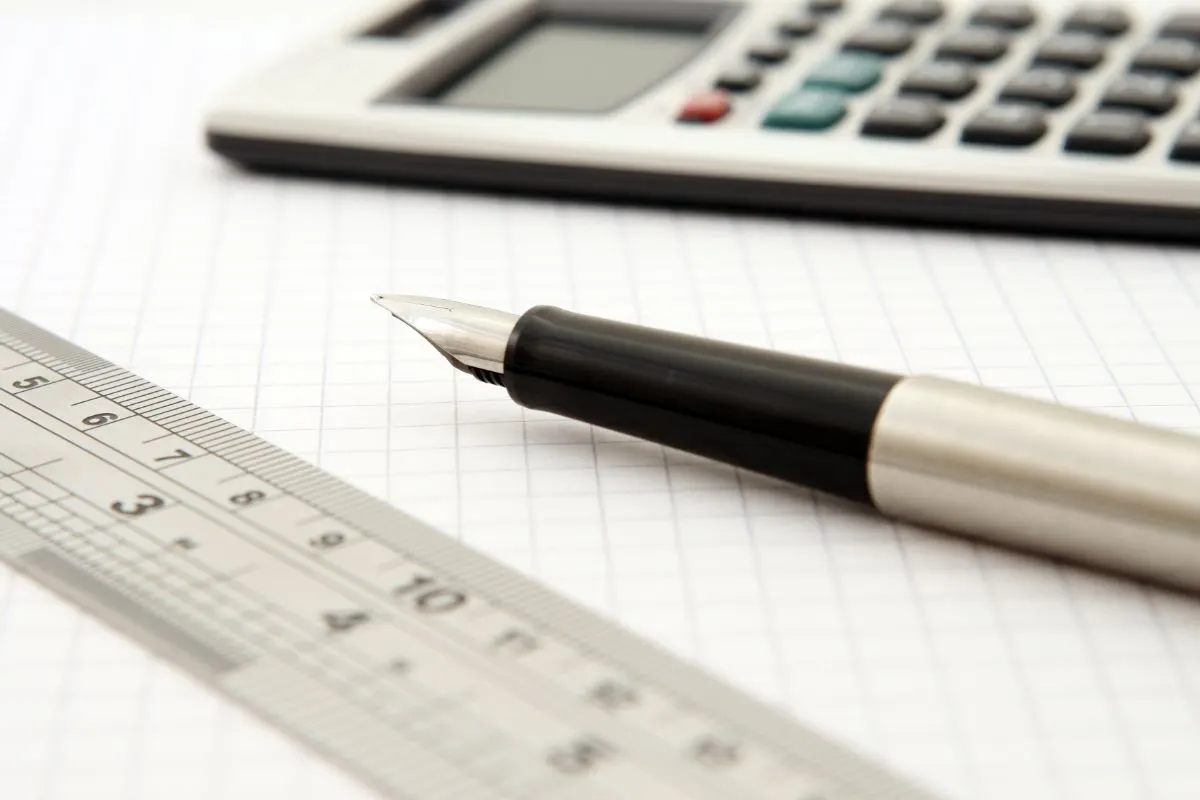Algebra 2 is the 3rd math course in high school. It guides you through many things, including graphs, linear equations, inequalities, polynomials and radical expressions, exponential and logarithmic expressions, quadratic equations, matrices, probability and trigonometry as well as sequences and series.

There are many aspects to Algebra 2, however, many might wonder when it is that Algebra 2 starts being studied.
In high school, Algebra 2 is the 3rd math course students will take. First comes Algebra 1, followed by geometry, and then Algebra 2.
Which grade Algebra 2 is taught in can vary, however, it is usually around the 11th grade. But, let us look into this some more!
Algebra 2
Students typically learn Algebra 2 in 11th grade. A curriculum generally builds on skills and knowledge that was gained in Algebra 1, and reinforced in Geometry.
It includes relationships between quantities through inequalities and equations, trigonometry and graphing of functions.
In high school, Algebra 2 helps students gain an understanding of probability, statistics, logarithms, exponents, and math models.
Generally, Algebra 2 courses cover the four main areas: periodic phenomena, functions, analyzing data and collecting, and polynomials.
Teaching Algebra 2
If you wanted to go on to teaching Algebra 2, then be aware it can be challenging, especially for people who learned a different version of math when they were in high school.
However, luckily, there are many resources available, and there are even homeschoolers who have done this already.
If you are a homeschooler, teaching Algebra 2, here are some steps to help you:
- Follow the sequence of your curriculum in order to make sure that the topics are shown logically.
- Encourage 11th graders to set up an environment and schedule allowing for sustained concentration for periods of learning if you are homeschooling.
- Since higher-level math tends to build up on prior learning, help your child to identify and address their skill or knowledge gaps before a new topic is started if homeschooling.
- Check to ensure that the child has good strategies for studying the processes, remembering equations, and checking through answers.
- Be aware that 11th grade is already difficult with academics, activities, work, and social life while managing what happens after high school, and algebra is added to this.
- Vary how algebraic information is presented, look at multiple ways to present, such as videos, texts, and demonstrations, especially for harder topics.
- Provide flexibility and time to revisit certain materials. Allow assignments to be redone, tests, and quizzes, and provide additional resources to aid in topic mastery.
- Help the students to notice achievements in their learning of Algebra 2, this will inspire motivation.
- If homeschooling, reach out to others doing the same for advice or to find tutors or resources for difficult topics such as this.
What Are The Learning Objectives Of Algebra 2?
Depending on your state, and the specifics of the curriculum used, the learning objectives of Algebra 2 can vary. However, we will have a look at the basics, so you have a vague idea of what the learning objectives of this topic are.

- Evaluate differences, products, sums, and quotients of functions.
- To determine the roofs of and factor polynomial function.
- To use the discriminant to be able to determine the number and type of roots in a quadratic equation.
- To analyze a function rule or graph to determine transformations of the parent function.
- To graph out rational functions that have only horizontal and vertical functions.
- To write out a one-variable radical inequality into a model problem.
- To compare cosine, sine, and tangent values for angles that have the same reference angle.
- To solve logarithmic expressions by converting between logarithmic and exponential forms.
Topics
Each school and curriculum will look at the topics of Algebra 2 differently, however, the vast majority will focus on the following topics throughout the topic.
- Equations and inequalities.
- How to solve systems of linear equations.
- To learn how to graph functions and linear equations.
- To become familiar with quadratic functions and inequalities.
- To become well acquainted with matrices.
- To be familiar with polynomials and radical expressions.
- To gain an understanding of conic sections.
- Understanding of trigonometry.
- To understand and use rational expressions.
- To be able to use and understand exponential and logarithmic functions.
- To be able to discrete mathematics and probability.
These are all the primary objectives of a curriculum that looks at Algebra 2, whether you learn online, in a school, or at home. These are the main focus points.
The Correct Math Sequence In High School
While several different areas of math are covered in school, the actual order in which the math is covered is not as critical as making sure that math is taught for 4 full high school years.
High school transcripts should include 4 credits for math, 4 years is important as it is often a requirement for graduating. Also, most colleges required 4 full years of math as well.
Homeschooling can make this complicated though, perhaps you want to teach 4 years of math in their high school years when they already have 4–5 years of math by this time.
This does not mean they have to complete upper-level math, they should simply keep moving forward in math. Note that there are two typical math sequences for high school learning
One is Algebra 1 – Geometry – Algebra 2.
Or
Algebra 1 – Algebra 2 – Geometry.
It does not matter which way is done, however, some children benefit from Geometry before they enter the 11th grade to prepare for the PSAT and SAT.
Overall
Algebra 2 is often taught in 11th grade, but this is not always the case, it depends on the individual curriculum. Remember, that while every curriculum is different, many follow the same basic outline, and with math, this is mostly true.
Most curriculums will teach Algebra 1 – Geometry – Algebra 2, however, if you homeschool your child, you don’t have to!
- Homeschooling In High School: Pros And Cons - February 24, 2024
- How Do I Withdraw My Child From School To Homeschool? - February 23, 2024
- How To Not Go Crazy Homeschooling Kids: A Guide For Frazzled Parents - February 22, 2024









Leave a comment